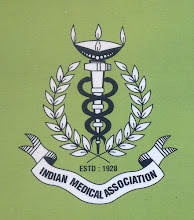Since the first Coronary Artery Bypass Grafting (CABG) performed in the 1960's, the operation has evolved to make surgical treatment of coronary artery disease safer and more durable. I have briefly outlined the three major aspects of CABG which have contributed to excellent results of CABG.
1. "Off-Pump CABG". The advances in CABG were mainly due to the heart-lung machine (cardio-pulmonary bypass) which made it possible to perform surgery on a still (arrested) heart. Despite the availability of latest heart lung machines, this "on-pump" technique is still associated with few morbidities like stroke, renal failure, bleeding and atrial fibrillation. To minimize these morbidities, we have adopted the "off-pump" or "beating heart" CABG. Off-pump CABG (OPCABG) has the following advantages: Decreased incidence of stroke / renal dysfunction / bleeding / atrial fibrillation; Overall length of ICU and hospital stay is reduced; Decreased cost. There is no significant difference in mortality with either technique. The off-pump technique is technically demanding with a steep learning curve and hence not available at all centers.
2. Total Arterial revascularization: Upto the mid 1980's the conduit of choice for bypassing diseased coronary arteries was the saphenous vein. The saphenous vein was easy to harvest, easy to handle with minimal complications to donor site. However, followup studies showed that patency was only about 50% at 10 years. Hence there was a shift to using arterial grafts for CABG. The left Internal mammary artery was proven to be the ideal conduit for grafting with patency exceeding 90% at 10 years. For multivessel grafting, both right and left internal mammary arteries; as well as additional arterial conduits like the radial artery can be used. With experience, the mammary arteries and radial arteries are easy to harvest and handle with excellent long term patency. Arterial grafts have Superior Graft Patency ; Reduced incidence of Myocardial Infarction and Reintervention and Improved Long-term Survival
3. Minimally invasive surgery. CABG can be performed through small incisions in certain patients with good anatomy. The access could be through a small or hemi-sternotomy; or sometimes via a small lateral thoracotomy incision. These approaches have shown to benefit patients in terms of reduced postoperative pain and also quicker discharge. Robotic cardiac surgery is in evolution and we can expect it to be available to our patients in the next few years. Endoscopic approaches have been used to harvest conduits (Saphenous vein and Radial artery). "Hybrid" procedures combining Minimally invasive CABG with angioplasty have been used for enhanced patient satisfaction.
Dr. Jayesh Dhareshwar,
1. "Off-Pump CABG". The advances in CABG were mainly due to the heart-lung machine (cardio-pulmonary bypass) which made it possible to perform surgery on a still (arrested) heart. Despite the availability of latest heart lung machines, this "on-pump" technique is still associated with few morbidities like stroke, renal failure, bleeding and atrial fibrillation. To minimize these morbidities, we have adopted the "off-pump" or "beating heart" CABG. Off-pump CABG (OPCABG) has the following advantages: Decreased incidence of stroke / renal dysfunction / bleeding / atrial fibrillation; Overall length of ICU and hospital stay is reduced; Decreased cost. There is no significant difference in mortality with either technique. The off-pump technique is technically demanding with a steep learning curve and hence not available at all centers.
2. Total Arterial revascularization: Upto the mid 1980's the conduit of choice for bypassing diseased coronary arteries was the saphenous vein. The saphenous vein was easy to harvest, easy to handle with minimal complications to donor site. However, followup studies showed that patency was only about 50% at 10 years. Hence there was a shift to using arterial grafts for CABG. The left Internal mammary artery was proven to be the ideal conduit for grafting with patency exceeding 90% at 10 years. For multivessel grafting, both right and left internal mammary arteries; as well as additional arterial conduits like the radial artery can be used. With experience, the mammary arteries and radial arteries are easy to harvest and handle with excellent long term patency. Arterial grafts have Superior Graft Patency ; Reduced incidence of Myocardial Infarction and Reintervention and Improved Long-term Survival
3. Minimally invasive surgery. CABG can be performed through small incisions in certain patients with good anatomy. The access could be through a small or hemi-sternotomy; or sometimes via a small lateral thoracotomy incision. These approaches have shown to benefit patients in terms of reduced postoperative pain and also quicker discharge. Robotic cardiac surgery is in evolution and we can expect it to be available to our patients in the next few years. Endoscopic approaches have been used to harvest conduits (Saphenous vein and Radial artery). "Hybrid" procedures combining Minimally invasive CABG with angioplasty have been used for enhanced patient satisfaction.
Dr. Jayesh Dhareshwar,
M.Ch (CVTS, AIIMS)
Consultant Cardiac Surgeon
Consultant Cardiac Surgeon

No comments:
Post a Comment